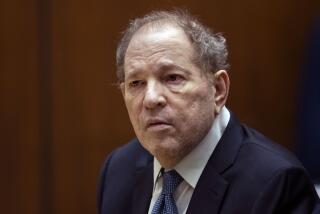Report Foresees Challenges as Number of Seniors Increases
Older Americans are healthier, wealthier and better educated than ever, but the expected doubling of the elderly population by 2030 will create social and economic challenges, a federal report released Thursday says.
The report, by the U.S. Census Bureau and National Institute on Aging, contains hopeful and humbling news about growing old.
People over 65 live with fewer disabilities than in years past, but that often means taking multiple medications and depending on artificial joints, pacemakers and other devices.
Although they’re living longer than previous generations, today’s seniors are not working longer, which has long-range economic implications.
And despite the increased wealth of today’s 65-and-older population, pockets of poverty remain. For instance, 40% of older black and Latino women who live alone also live in poverty.
Overall, the report contains a rosier view of aging in America than conventional wisdom might hold.
“There is little question, I think, that the present older population is better off in terms of health, disability and quality of life than in the past,” said Dr. Richard J. Hodes, director of the National Institute on Aging and one of several officials at a briefing Thursday.
The report offers no new research but assembles information from a variety of census surveys and federal statistical sources, including the Centers for Disease Control and Prevention, Bureau of Labor Statistics and Medicare claims.
The authors said they didn’t want to recommend particular actions, instead providing detailed information for policymakers in a single volume.
As the welfare of older Americans has improved, fewer are working, the report showed. Though about half of men 65 and older worked or looked for work in 1950; fewer than 20% were in the labor force by 2003. Employment rates for older women changed little over that period, hovering about 10%.
With the first baby boomers reaching age 65 in five years, the older population is expected to reach 72 million by 2030, twice the number in 2000.
The oldest portion of the population -- those 85 and older -- will also double during that period, reaching 9.6 million. Likewise, the number who have celebrated their 100th birthday increased from 37,000 in 1990 to more than 50,000 a decade later. It is expected to grow further in years to come.
More to Read
Start your day right
Sign up for Essential California for news, features and recommendations from the L.A. Times and beyond in your inbox six days a week.
You may occasionally receive promotional content from the Los Angeles Times.






